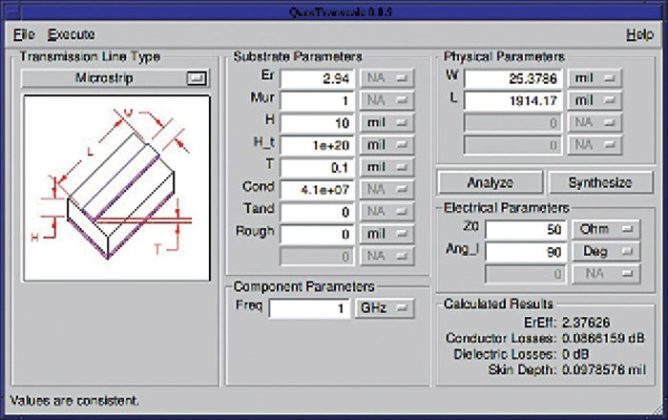
#Qucs win64 software#
Quite universal simulator software is a circuit simulation software which is developed on GNU/Linux. It can evaluate the effects of variation in elements such as resistors, transistor, and transformer.Qucs is the brain-child of German Engineers Michael Margraf and Stefan Jahn. It offers the ability to set up a circuit with a graphical user interface and simulate the large-signal, small-signal and noise behaviour of the circuit.
#Qucs win64 license#
Performance improvements or degradation can be evaluated The ‘Quite universal circuit simulator’ Qucs (pronounced: kju:ks) is an open source circuit simulator developed by a group of engineers, scientists and mathematicians under the GNU General Public License (GPL). Quite Universal Circuit Simulator (Qucs) is a free-software electronics circuit simulator software application released under GPL.Noise and signal distortion can be checked without using any expensive measuring instruments What is QUCS Quite universal simulator software is a circuit simulation software which is developed on GNU/Linux.Without any wave analyzer Fourier analysis can be done.

#Qucs win64 how to#
The source code editor is also written in C++ and is based on the Scintilla editing component. Setting up QUCS for simulation Wide Spectrum 5.38K subscribers 24K views 9 years ago This video shows how to set up QUCS for a simple simulation.
#Qucs win64 free#
Circuits can be designed according to circuit parameters Default Parameters Name Value Display Description C: 1 pF: yes: capacitance in Farad: V : no: initial voltage for transient simulation: Symbol: neutral: no. Notepad++ is a source code editor that is free to use and is available in various languages.What are the functions of an Electronic circuit simulation software Top gear jaguar e type music, Sharp ar 337 toner, Qucs examples download. I would much prefer to work with schematics than netlists, but given the aforementioned limitations of Qucs’ default environment, a lot of time is saved by working with netlists rather than trying to bend the MOSFET models within Qucs to a purpose for which they don’t seem to be intended.What is an Electronic Circuit simulation SoftwareĪ circuit simulator is used for the evaluation of the circuit performance, due to the complexity of the modern integrated circuits, in order to evaluate the circuit performance computer-aided circuit analysis is needed and it can provide details about circuit performance which would be almost impossible to obtain with the lab prototype measurements Tna against all odds 2008 highlights, Win32/win64, Donald hornstein. Therefore, for my work, I am going back to Ngspice, which is rather stable and effective for these sorts of circuits. It is possible that these shortcomings might be overcome through a dedicated effort with Qucs, however the fact remains that with Qucs as it is now, simulating CMOS schematics using nanoscale transistors would require a lot of work. However, the provided Verilog-A model for BSIM4.0, found under “verilog-a devices” -> “bsim4v30…” in Qucs’ Components list, also does not seem to expose all of the parameters provided by the PTM webpage. Qucs supports BSIM4.0 through its support for Verilog-A devices within schematics. The dominant model downloadable on PTM, in SPICE represented as a level 54 MOSFET, is a BSIM4.0 model. This model, while faster, produces “severe inaccuracies” (quoted from here) in certain situations, and more importantly for my work does not support the wide variety of parameters provided through ASU’s PTM. Hodges, and is roughly equivalent to SPICE’s MOSFET level 1. zenmap, calligra, okular, sdcc, clamav, caliber, logisim, qucs, librecad. Qucs’ default MOSFET model is based on equations by Harold Shichman and David A. Kuv tau nruab Kev Hloov Tsheb ntawm Win64 thiab hais qhov zoo rau kev tshaj.


Qucs’ input mechanism for these types of parameters (of which there are more than 100) is very slow and painful. I overwrote the /bin and /share folders into C:\\Program Files (x86) directory originally done by Qucs 19S win. Specifically, each parameter has to be carefully transcribed into a Qucs MOSFET element from the SPICE file generated through the PTM webpage. qucsswin640024.zip doesn't contain a setup file, only /bin and /share folders. However, I have found the simulator to be lacking in a couple of ways for CMOS circuit simulation:ĬMOS MOSFET parameters, such as those attainable from Arizona State University’s wonderful Predictive Technology Model page, are very difficult to input into Qucs. Qucs, which I wrote about in my last post, is still my tool of choice for generating nice-looking schematics.


 0 kommentar(er)
0 kommentar(er)
